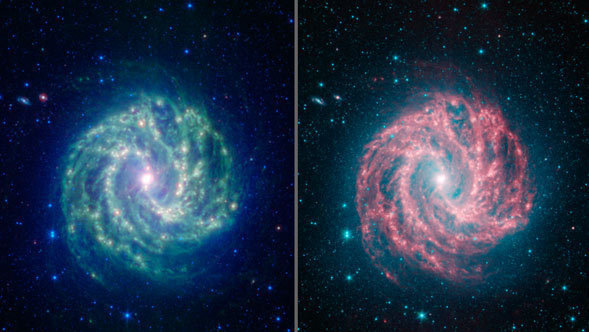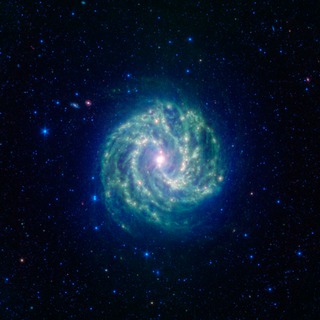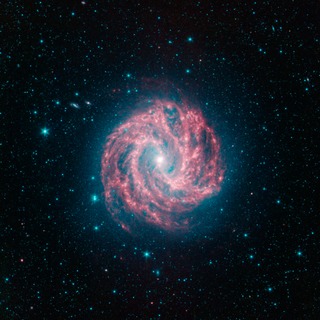
News Release • November 23rd, 2011 • feature11-13 •
Have you ever wondered what the Milky Way galaxy would look like if we could warp into intergalactic space and look back at it from the outside? These two infrared views of Messier 83 from NASA's Spitzer Space Telescope may give us a clue.
Spitzer's double-take shows us two different ways of representing the infrared colors in this spectacular spiral galaxy. For one thing, it's easy to see why colloquially it is known as the "Southern Pinwheel" due to its striking whirl that is very similar to the more northerly "Pinwheel" galaxy Messier 101.
Like the Milky Way, Messier 83 is classified as a barred spiral galaxy due to the bar-like pattern of stars that run through its center. This bar region is more interesting in the infrared since we can also see the open "s" shaped curve of dust cutting through the more linear stellar bar.
This arc of inner dust connects up with the more tightly wound spiral arms in the outer disk, seen here as bright green-red ridges. Some of the hottest regions of star formation show up as reddish-white dots along the spiral arms, with the most vigorous star formation happening in the galaxy's center. Between the main spiral arms we also see a complex webbing of dust that permeates the entire disk.
While Messier 83 is about 15 million light years away, it is actually one of the closest barred spiral galaxies in the sky. This gives astronomers an excellent chance to study a galaxy that, although half as big, seems very similar in structure to our own Milky Way galaxy.
Take a close look at both of these views of Messier 83 and see which is your favorite way of rendering the Southern Pinwheel!






